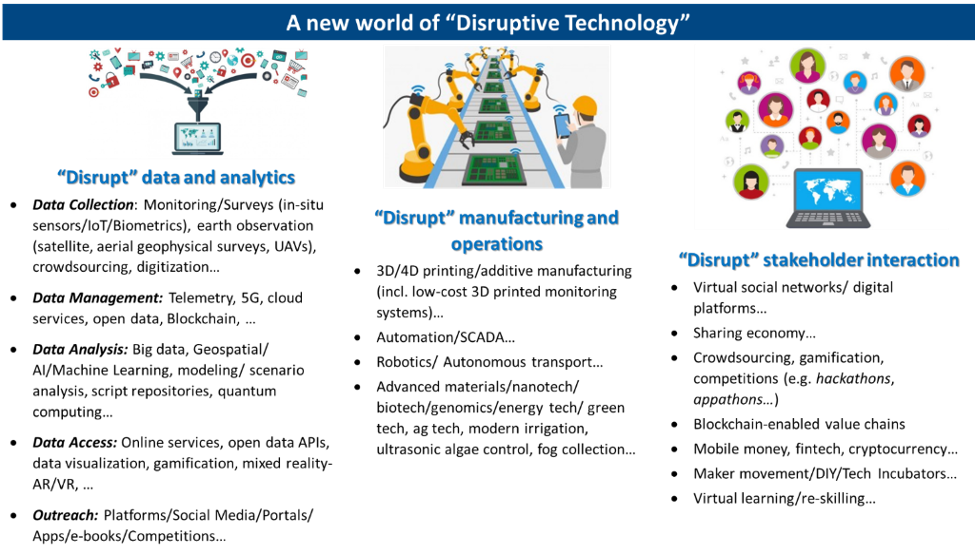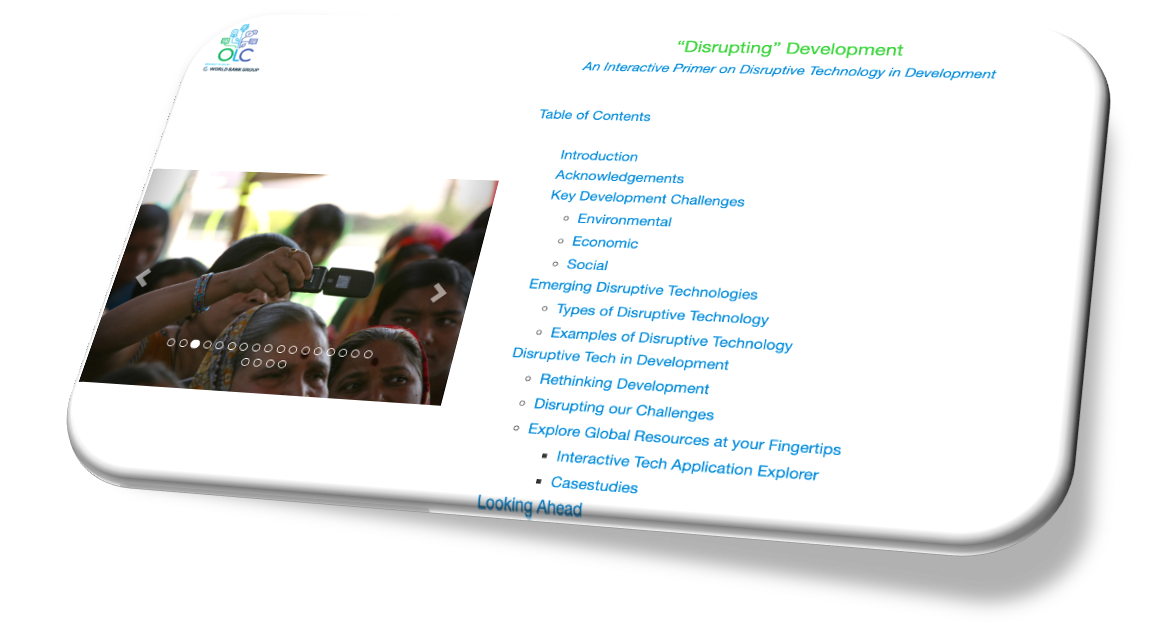There are an exciting set of opportunities to address the traditional challenges of water resources and help better connect to global good practice.
Countries around the world are finding how the use of technology can automate effective monitoring and provide accurate data for better planning, for effective decision making at all levels. Artificial intelligence and big data provide a means for real time monitoring and analysis of data, which can be accessible via smartphones and other platforms for policy makers and citizens.
The use of sensors in every setting will help us move towards an Internet of things (IoT) operationalization. These will be complemented with crowdsourcing (in structured and unstructured ways) of data from people (e.g. mobile Apps), and the leveraging of increasingly powerful remote sensing technologies such as satellites and drones. These will give us a new holistic perspective not only of water resources, but of the natural and anthropogenic context that water resources are generated, stored, managed, used, and disposed. This will lead to interfacing in data systems between natural resources (e.g. weather, flows, glaciers, snow, surface and ground waters, water quality, watershed characteristics) and their use (e.g. storage in dams, flows in pipes, soil moisture in agricultural fields, etc.) for a more holistic management to address issues of efficient and sustainable water use, water infrastructure planning and operations, reducing losses, and managing climate risks.

More information on this growing world of new technologies here (especially see interactive examples )

These technologies can help us rethink all aspects of water resources planning and management. They can help with collecting and analyzing data, visualizing these in interactive dashboards and connect people in innovative ways to support decisions. They can help modernize institutions and how they work to serve their clients. And they can help us explore future development and climate scenarios in order to visualize and prioritize investment planning and facilitate coordinated and more optimal system operations. Most importantly, the opportunity to contribute to, and build on, a growing range of online services can help everyone access relevant information in a customized manner to improve awareness, develop a shared vision, and benefit from each other’s work. Emerging approaches to creating “ digital twins ” of natural systems (e.g. basins/watersheds) and infrastructure (e.g. dams, urban water supply and sewerage systems) that offer a digital equivalent of the real system can help different stakeholders work together on these systems.
The water sector faces increasing pressures especially due to the impact of climate change. In the developing world governments will have to increase resilience and sustainability within the sector, within water scarcity and safety, water efficiency, operations of utilities, the treatment and monitoring of water resources and the generation of data and analytics, technology will play a critical role. Globally, there is a growing willingness to test and adopt some of these new technologies among utilities and operators; technologies such as remote sensing of water which can help with water accounting, non-revenue water remediation, artificial intelligence and big data also offer the capability now to analyze large volumes of water data to aid in decision support and policy making for the sector, in the area of water in agriculture , the internet of things is also enabling smart irrigation for efficient use of water.
These technologies also help utilities to move to serving customers digitally, enable remote and real time management of water resources, utilize distributed technology for the expansion of water and wastewater management services to communities. ( World Bank ). The move to increased e-governance will also help quicker identification and redress of complaints and concerns (e.g. for non-functioning infrastructure or unmet demands), collect and organize inputs to improve sector governance, and support useful benchmarking of such services.
Bhutan will need significant efforts to internalize these tremendous disruptive changes in technology related to reimagining the data value chain for water resources management. This will include a combination of work on information, institutions, and investments. These will include an improved set of investments for real-time monitoring, better enabling policies and their operationalization for making these accessible in the public domain as “analysis ready” services, institutional infrastructure and skills development to modernize water-related institutions, and find ways to make these systems (be it information, institutions, or investments) become more inter-operable at different scales with a common vision for integrated water resources planning and management.